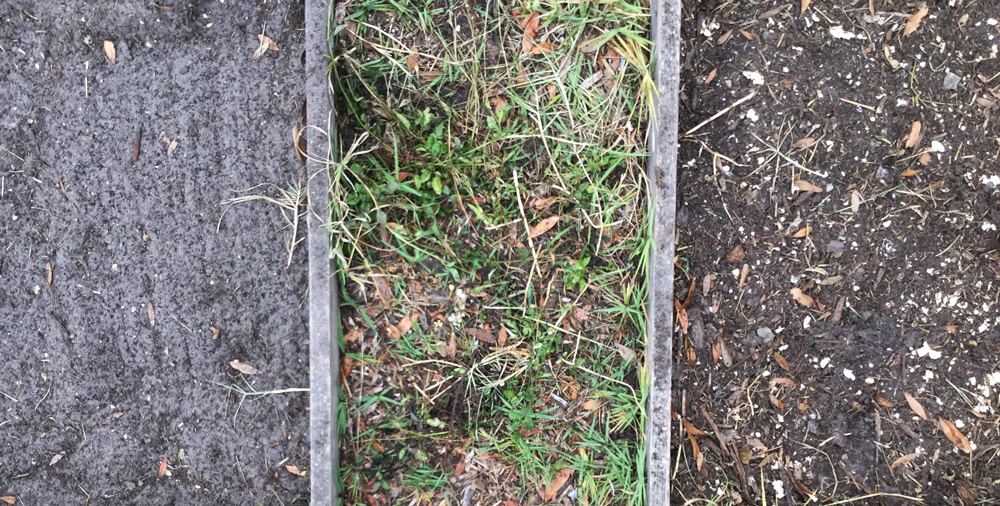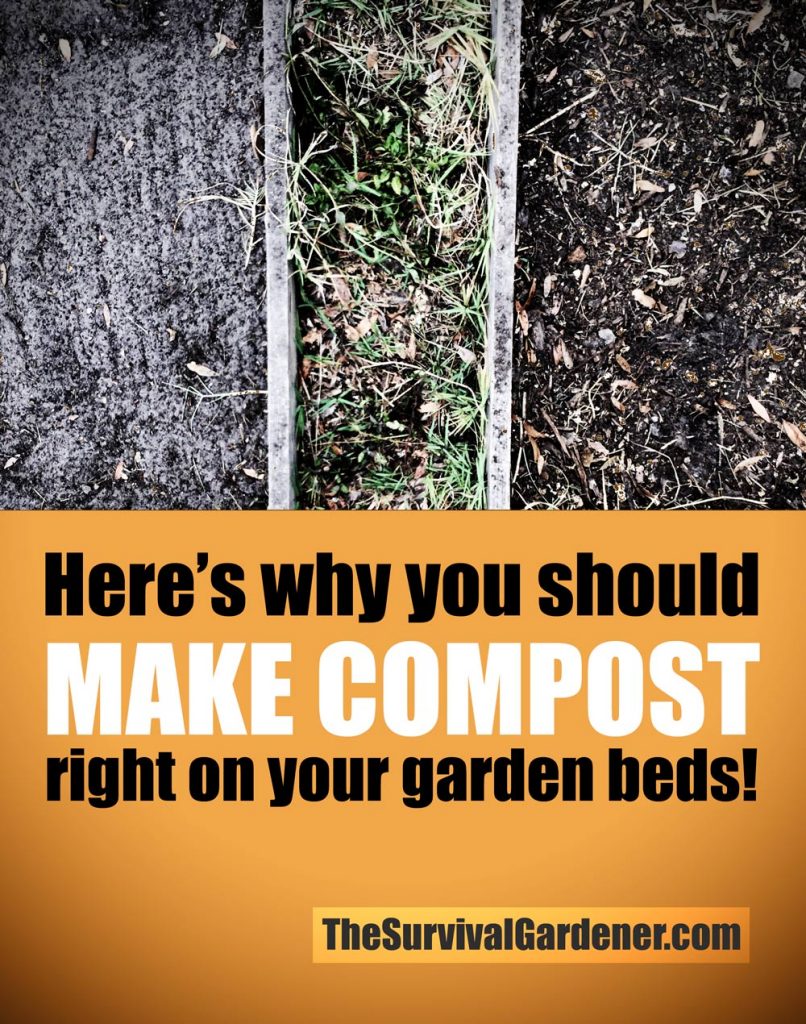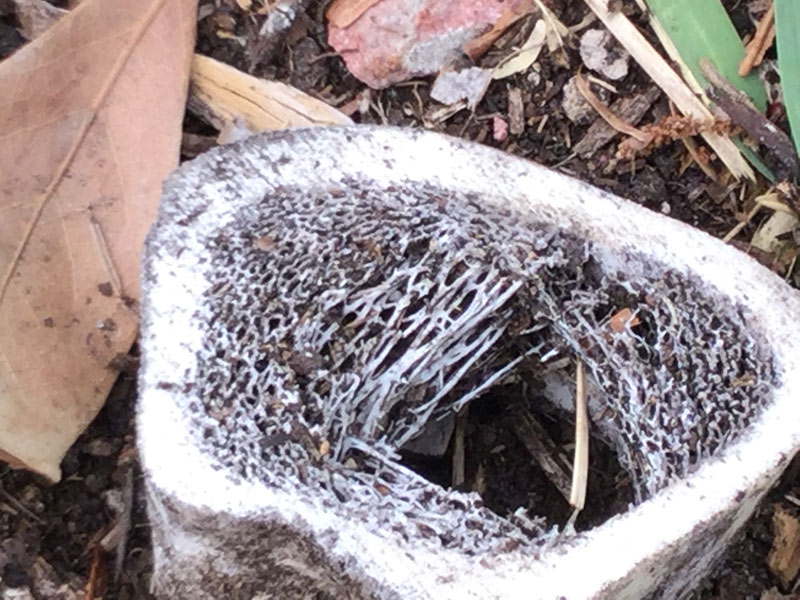Long-time reader W. R. sends in a composting field report:
“It is good to see you all are having fun in the tropics. I watch your videos weekly.
I haven’t been doing a whole lot of active gardening, but I wanted to give you a little update in photos.
I have two to 4’x 8′ raised beds next to each other that were left fallow since last fall. They were both recently cleared of weeds and grass, and here you can see the difference between them:

The left one is a native soil I started adding kitchen scraps to, but not for very long. It also was more exposed to the sun. The right one was a compost pile I threw kitchen scraps and coffee grounds in.
This bed had more growing in it, and the soil was more protected by the sun. The right one looks more like good soil, eh?
No pink flip-flops this time.”
Though her email had a sad lack of pink flip-flop photos, this is a great illustration of what in-bed composting accomplishes.
As I write in Compost Everything: The Good Guide to Extreme Composting, it just makes sense to build compost piles on top of garden beds.
Why Compost on a Garden Bed?

Less Materials Handling
When you compost directly on top of a garden bed, you don’t have to worry about moving as many materials.
You throw your kitchen scraps, leaves, rabbit manure, etc., right onto a bed. Don’t worry about it getting hot – it will rot down over time.
If you want it to compost hot and fast, build up a compost pile higher over the bed like I do in this video:
But really, nature will handle it.
Throw everything down on a garden bed and then some months later when you’re ready to plant, fork off the rougher stuff onto the next closest bed and get planting.
More Good Stuff Stays Where You Want It
Second, all the good leachates that would normally run into ground beneath a compost bin are instead transferred right into the ground where you will be growing.
If you’re ever moved a compost pile and seen the right worm-filled soil beneath it, you know what I mean. If you’re not planting that area, it’s a waste!
W. R. has also been composting meat and bones like a good extreme composter should:

As bones break down in the soil, they will feed your garden long-term.
Compost right on top of a garden bed if you can.
It just makes sense, and as W. R. demonstrates by her before and after photo, it also makes good soil.


8 comments
HELP!!! I ordered 3cu yards of mushroom compost for my raised beds (vegetable) garden. And believe that instead of chicken manure (which is what the supplier told me) it was horse manure and sewer sludge.!!!! YES !!! SEWER SLUDGE!!! I know this because it had tons of dental floss in it!!! I did not use it in the garden but just spread through out my yard as top soil. is this ok for the bermuda grass???
It will likely be fine on the grass, but that would freak me out. Personally, I would send it back if I got a load like that. The sludge can contain heavy metals. Just don’t grow food on those areas. One application isn’t likely to wreck anything – the grass will probably like it.
I have good luck composting around my trees/fruit trees. I try to not let the compost near the trunk at least 6-8″. I learned the hard way. Years ago I would turn my compost pile then move it to my garden beds. It was a lot of hard work. After I read “Compost Everything”, I stopped working so hard and let nature do the work for me.
I find a quiet satisfaction to letting a compost heap get on and do several jobs at once for me. Apart from the good it does the soil, I have built beds in the roughest, weediest bits of my allotment to make the weeds sad and closer to dead over a season, this has made reclaiming nasty areas much less work :)
How about putting a chicken tractor type coop on top of the raised bed. Toss all the weeds, leaves, and scraps right in there with tons of dry carbons as a sort of compost deep bedding. Move the chicks to another area and let the first bed rest for a couple months. I’m going to trial this on our next place where I’ll most likely be growing in heavier clay soils.
By the way, the Compost Your Enemies shirt design is awesome.
Is it a good idea to compost IN BETWEEN beds–meaning dug a whole and put the kitchen scraps and other food waste in, and cover with grass cuttings and topsoil? What would be the disadvantages?
Thank you.
The only disadvantage I can think of is that you’d be using up your path space.
How to control ants in the garden. In buckets , bins and ground.
,
Comments are closed.